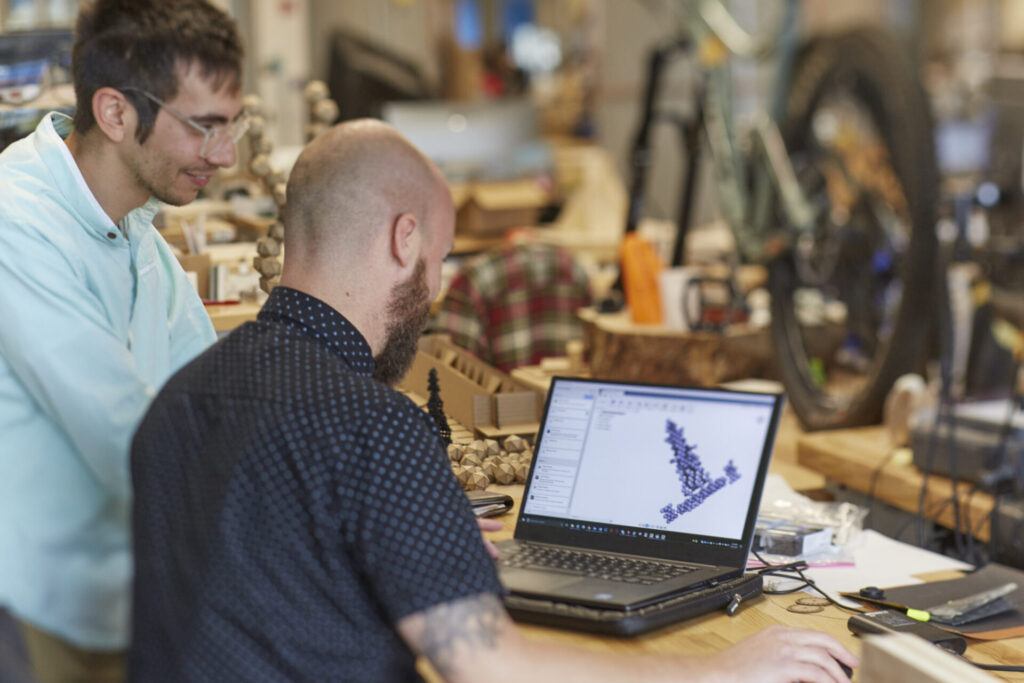Elevate your design and manufacturing processes with Autodesk Fusion
Want to create a truly collaborative design team and harness the power that comes with seamless collaboration? Follow these three steps.

It’s easy to fall in love with the idea of the lone innovator holed up in a laboratory to produce something brilliant. You can see it in the way we glorify the heroes of science, business, and engineering. In reality, though, most innovation comes from people working together to produce something that is greater than the sum of their individual talents or contributions. We see this success every day in how design teams use Fusion 360.
Engaged, uncompromised contribution should be the goal of every design team. And it’s vital that teams create an environment in which that kind of collaboration can thrive. Let’s look at three steps for enabling better collaboration within your product development team.
Step 1: Put everything in one place
When it’s feasible, it’s great to have your whole team working in a shared physical space, which helps foster clarity and prevents wasted time and effort. However, many teams nowadays work remotely across multiple time zones. In addition, not all collaboration happens synchronously (everybody looking at the same thing at the same time) but at the convenience and availability of each team member. So how do you bring them together?
First, teams need the technology that brings all resources and communication into one place and enables you to capture the decision making process and collaborate despite this dispersed nature.
Secondly, teams need the commitment that everyone will use these tools. This ensures all members are kept up to speed, no matter where they are.
Step 2: Embrace different roles and thinking styles
Not everyone is a designer, not everyone is an engineer, and not everyone is a project manager. That’s not only because of training or work experience, either. It also comes down to the different styles of thinking that people bring to their jobs. This diversity is actually a good thing because it helps teams attack problems — and come up with solutions — from many more angles.
When it comes to actual workflow, teams are probably accustomed to different applications and file types based on individual experience and preferences. They also likely need access to designs from different devices — desktop workstations versus wireless tablets, for instance. That’s the reality of the modern workforce and workplace. Any device, anywhere, always on. Thankfully, companies now have access to technology that lets them channel diversity in teams and workflows into stronger designs.
Step 3: Shorten the distance from ideas to feedback
One of the greatest proponents of the fast iterative approach is Sir James Dyson. In a story that has become well-known in business circles, he went through 5,127 prototypes to get the design right for the first vacuum he brought to market. “Fail fast and fail often” is the new mantra of modern product development teams.
That’s what you want on your team: an open approach to collaborative iteration that increases speed and reduces fear. Finding that sweet spot leads to even better feedback, tighter iterative loops, more focused group creativity, and eventually better products.
The power of a truly collaborative design team
On a great product development team, everyone feels free to contribute by working from their particular strengths but is also accountable for developing the best products possible.
With the steps outlined here, you can help your team achieve that powerful state in which the output of the whole is greater than the sum of the parts. Enabling that for modern, global, distributed, connected, and fast-evolving product development teams is exactly why we created Fusion 360. And we want to know: what are YOU going to achieve with a truly collaborative design team?
Learn more about Fusion 360 and try it out for free here:
